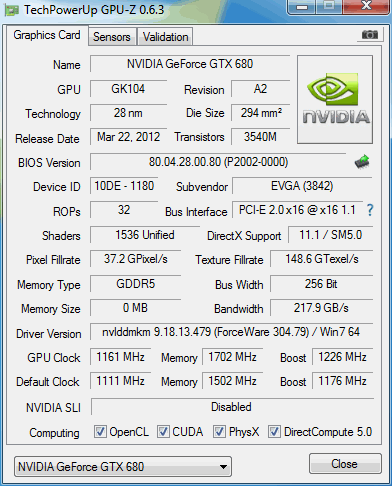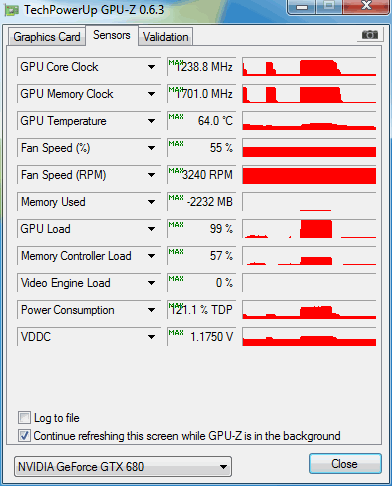Index
We split the OC part into two sections because we used PrecisionX software and EVBot overclocking device. As we said earlier, EVBot is purchased separately, one more reason to take a closer look at it. Users who don’t have EVBot will have to resort to software tools, but note that we couldn’t overvolt the GPU without the EVBot.
EVGA didn’t mess with GPU voltage on the Classified, which means that the maximum is set at 1.175v. Nvidia cited security reasons behind its insistence on specified values, claiming that it guarantees only for cards and GPUs operated within the specified voltage limits. This means that a product will not pass "NV green light" when OVed, as it will exceed the maximum power consumption and maximum heat dissipation. This is why EVGA didn’t launch an OVed Classified, but rather went for the EVBot, which can boost the voltage all the way up to 1.850v. Also warranty is not impacted by using EVBot.
Using only PrecisionX tool and not the EVBot, we overclocked the Base GPU clock by +50MHz. Although this may not seem impressive at first, the card is already overclocked to 1111MHz, making ours quite a decent result of 1161MHz (Max Boost clock at 1238MHz). It’s also important to note that no two GPUs will overclock/score identically. It appears as if we weren’t particularly lucky with our GPU, because we expected more. In comparison, we overclocked our GTX 680 Signature to 1185MHz.
The memory isn’t overclocked, so we’re talking 1502MHz (6008MHz effectively). The GTX 680 Classified comes with 4GB of memory distributed across 16 chips.
Overclocking the memory spells more bad news for the maximum GPU clock, even more so for cards packing 4GB. Memory also gets hot and consumes power, which may result in hitting maximum TDP and thermal limit faster. We’d still advise you to overclock the memory, especially if you’re interested in gaming performance. In fact, increasing the bandwidth occasionally yielded bigger performance boosts than the same card with only its GPU overclocked.
4GB cards come with a realistic chance that one of the chips won’t be in the “mood” for overclocking, making its clock the limitation for overclocking. The maximum memory clock without overvolting was at about 6800MHz.





